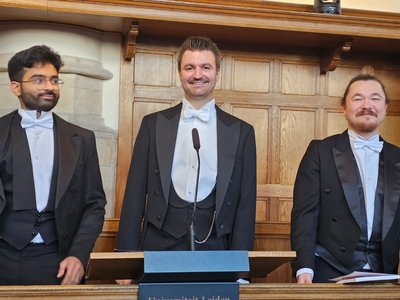Both in the medical world and in the analysis of cultural artefacts, CT scans are an essential tool for creating digital cross-sections of objects or the human body based on X-rays. The quality of a CT scan is therefore highly dependent on the raw X-ray images. With complex objects, such as works of art with metal structures, a problem often arises: so-called “beam-hardening” artefacts. These are errors in the image that arise because low-energy X-rays are absorbed by the object.
One way to solve these errors is to filter this radiation. The disadvantage is that this can weaken the measurement signal, leading to noise in the form of grainy images. This is similar to a photograph taken in low light. Simply put, the challenge is to find a balance between removing errors and maintaining sufficient signal and contrast.

The Smart Solution: the development of Learned Algorithms
In his research, Maximilian focused on using learned algorithms to improve image reconstruction. He did this by training the data with both poor and good CT data. In this way, the algorithms learn to convert poor images into sharp, error-free reconstructions.
An important and surprising outcome is that, for removing “normal” noise, such as graininess, it is more effective to train the algorithms with artificial noise. This is simple, mathematical noise added to the computer by the researcher. However, more complex errors, such as beam hardening caused by physical processes in the object itself, cannot be accurately simulated by simple, artificial noise. Real experimental data must be used to train the algorithms.
These findings make a fundamental contribution to the future standardised development and mutual comparability of self-learning algorithms for CT image reconstruction.
